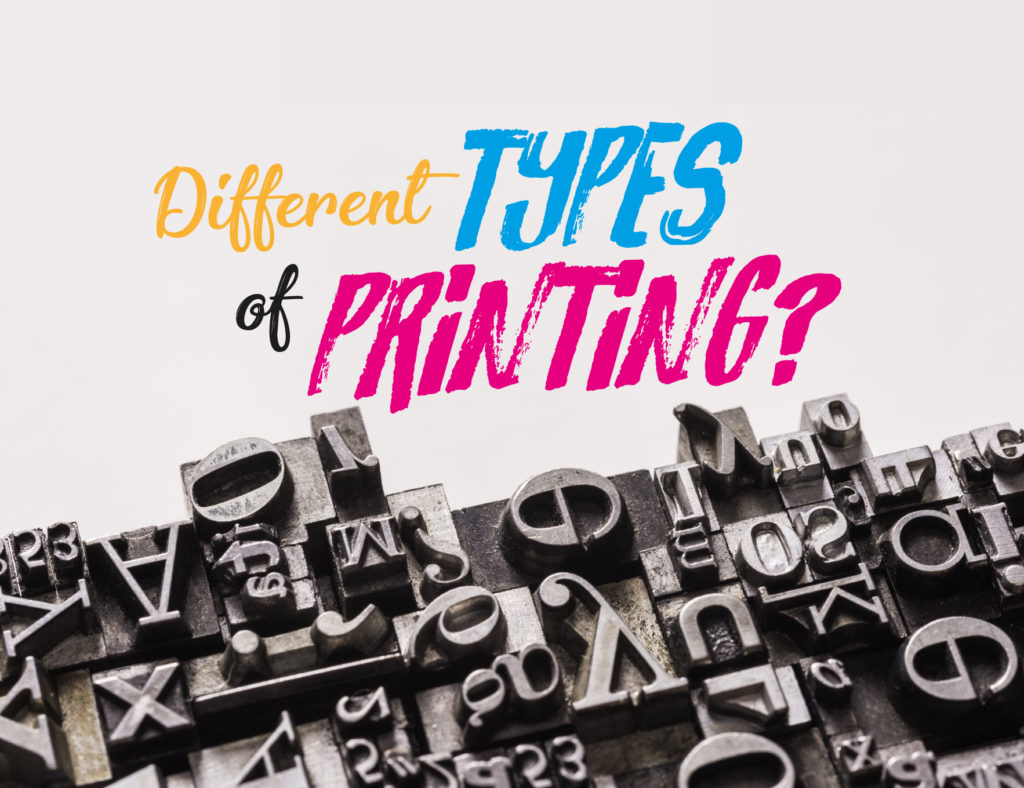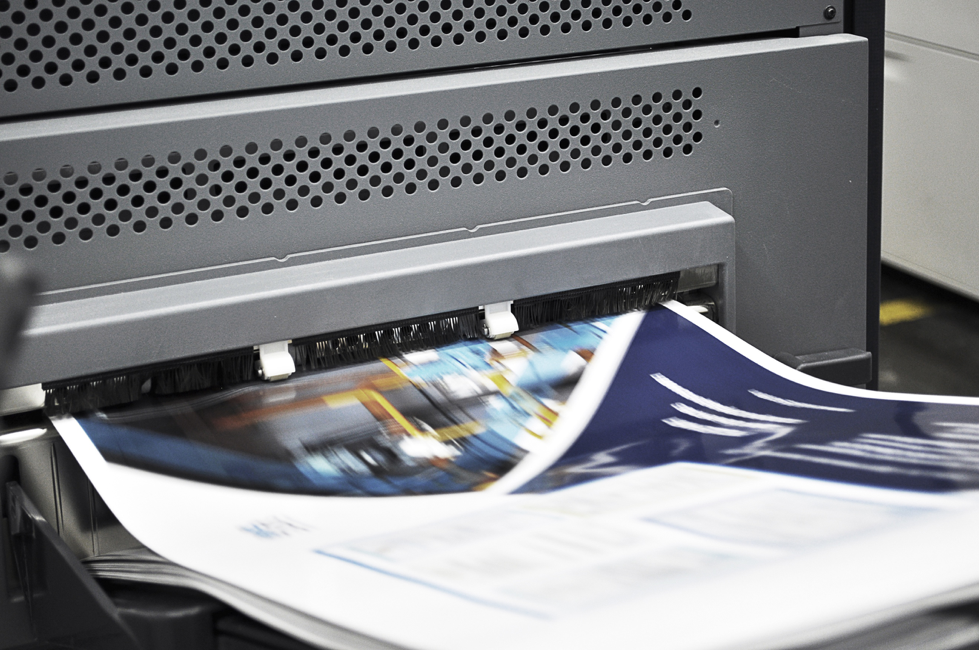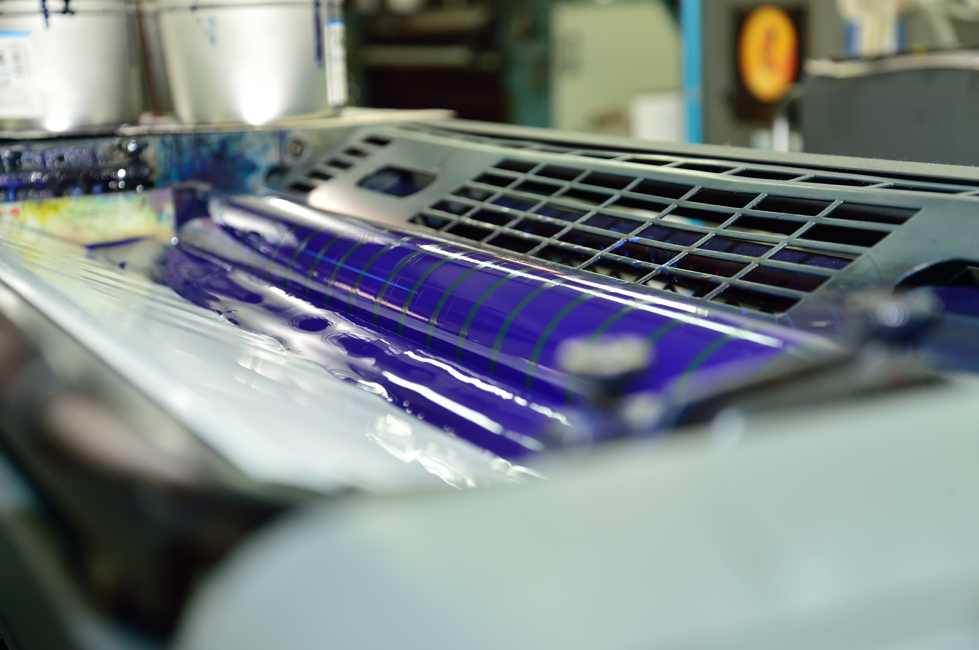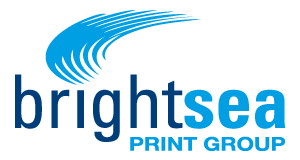
Ever since the Gutenberg Bible was printed in 1455, the world of printing has developed at an astounding rate. Perhaps not the most celebrated industry in the world, with the technology, film and TV and video games sectors receiving most of the limelight, the printing industry is a steady hand and one that has been omnipresent in the development of the modern world. After all, Apple still needs posters, right?
However, it is because of this lack of acclaim that people often overlook the intricacies and nuances that come with operating within the print industry, with one of the most glaring being the type of print used. Although the result may often seem the same to many people – a business card, poster or booklet, the journey is what defines the quality of the print, and ultimately the quality of the final product. In this article, we look to dive into the various different types of print, why they are used and what makes them unique.

Digital Printing
Digital printing, as the title suggests, is a digital method that involves the transference of a digital image onto a physical surface such as paper, card or cloth. Digital printing is one of the most common types of printing because it is less expensive to run (therefore less expensive for the customer), creates less waste in the setup process and can be done considerably faster on a small or large scale.
A huge advantage with digital printing is the opportunity to alter the message of the printed article on the run. So you have the ability to target sectors, personalising each sector, changing image and text to suit, whilst keeping the base copy the same. This is perfect for mailers etc., and allows a much more targeted and segmented effect, with far better returns.
Flexographic Printing
Commonly known as flexo, this method of printing is widely used for packaging, such as plastic or cardboard, as it is adapted to print on uneven surfaces by maintaining contact with the print material. A flexo print is produced by using a roller system whereby one roller presses the print material onto another roller which lays the ink onto the material. Because the inked roller is flexible it can maintain contact with the material at all times.
Flexography is not an ideal method for intricate printing that requires detail because of the nature of the process; although there are some more developed presses available, some that can even rival litho print, we firmly believe that litho is the highest quality available. That said, because of the more basic nature of the print, it means that it can work extremely quickly and is capable of producing up to 450 meters per minute.

Offset (Litho) Printing
Offset printing, often referred to as litho, is one of the most common processes in the print industry today. The reason for this is because of the quality, speed and detail that the presses are capable of.
Lithographic printing works similarly to flexographic in that it uses a chain of rollers but differs on a few points. Firstly, the process uses custom aluminium plates for the printing process which are produced separately and fed into the machine to use. The plates are wrapped around a roller which is then connected to a blanket roller. The purpose of the blanket roller is to preserve the quality and longevity of the press plate and to simultaneously transfer the inked design onto the paper. This process also includes the impression roller which presses the print material into the blanket roller.
Unless you’re a print guru, it’s not entirely clear why offset printing is called offset; we want to clear this up! The reason it is called offset is that the image is not directly transferred from the plate to the material; this is the big difference to flexo and the step that differentiates it from other methods.
Rotogravure Printing
Rotogravure is an interesting printing process as it is part of the intaglio print method family, meaning that ink is held below the surface of a printing plate or roller in an etched design, rather than on top of the area like a typical stamp impression method. The depth and size of the etching will directly correlate to the amount of ink it can hold, meaning a deeper line will result in a fuller colour. Similar to litho and flexo, Rotogravure is a rotary print method and uses four different rollers for each print colour (C, M, Y, K), with each roller being fitted with a drying unit.
The process of rotogravure is commonly used for art and photography reproduction because of the amount of ink that can be transferred to the print material is higher than other methods; that said, the image typically isn’t as clean as litho.
Hopefully, this has given you a brief understanding of some of the different types of printing process available in the industry. Our Devon printing company specialises in litho and digital printing and has a range of machines that will be able to cater to any job. Get in touch for a quote or if you have any questions.
At Brightsea we offer you the most economical route to market. If your job is best produced on Litho or Digital presses we are committed to give you best value at the most competitive price.

